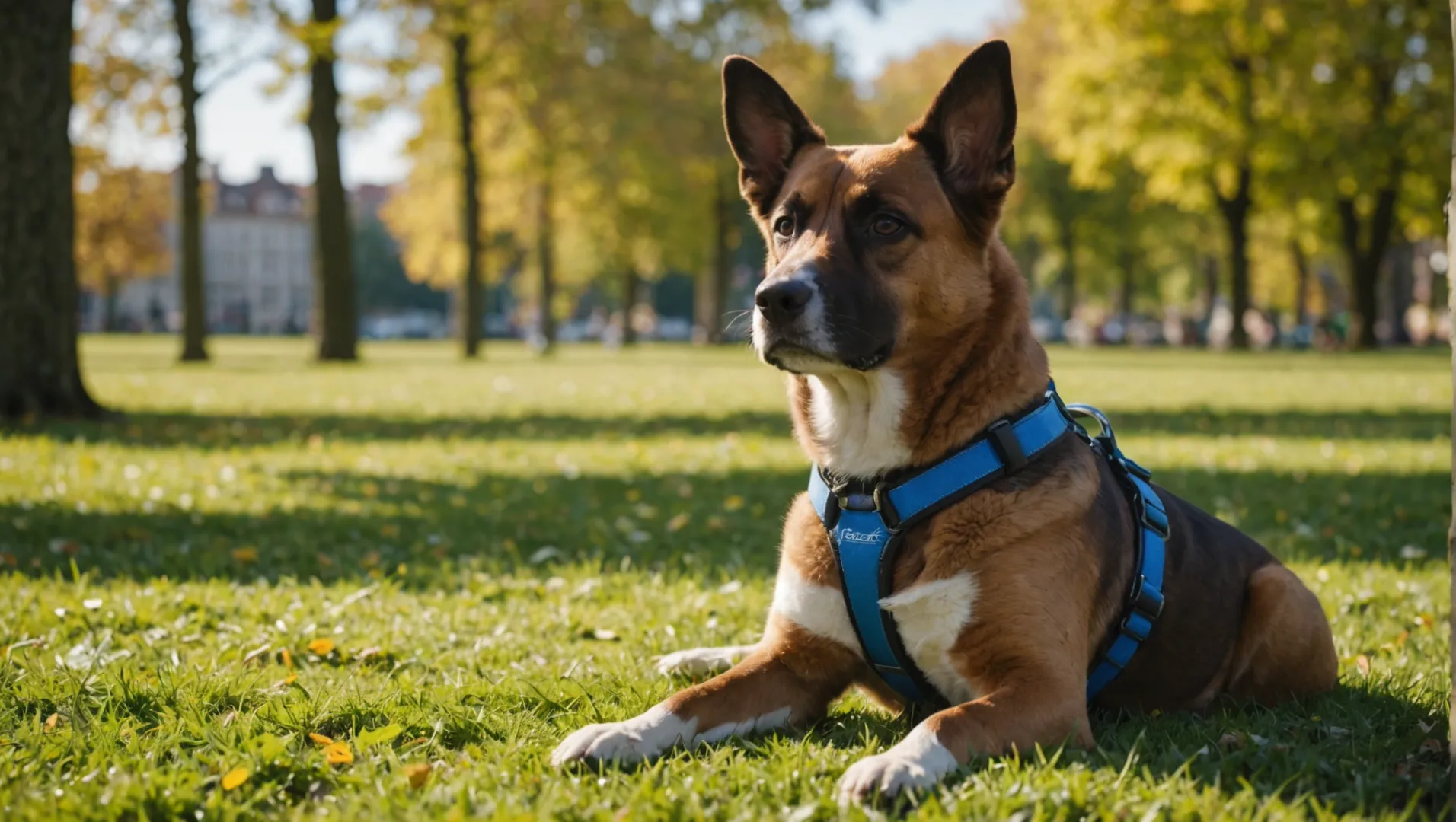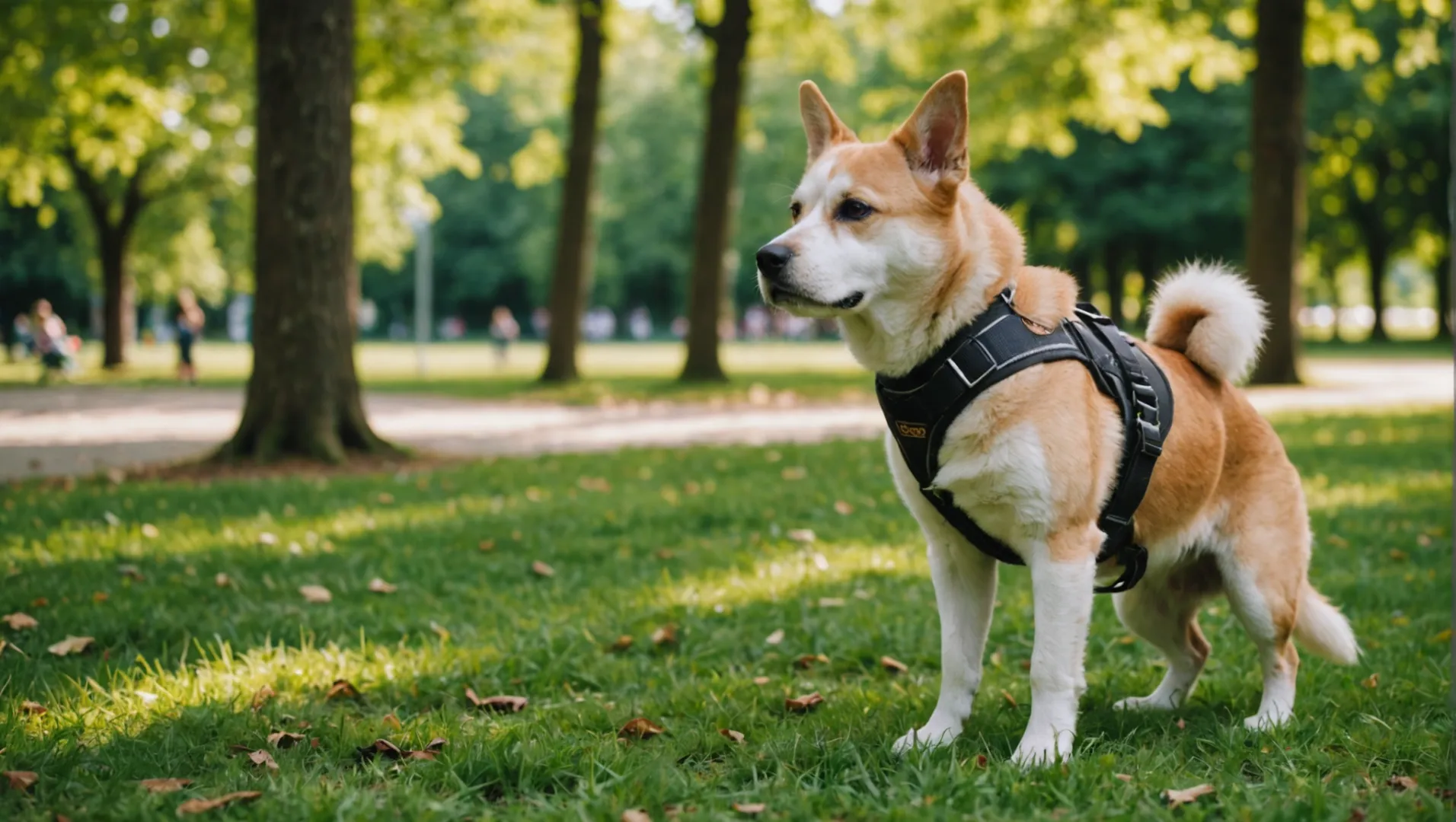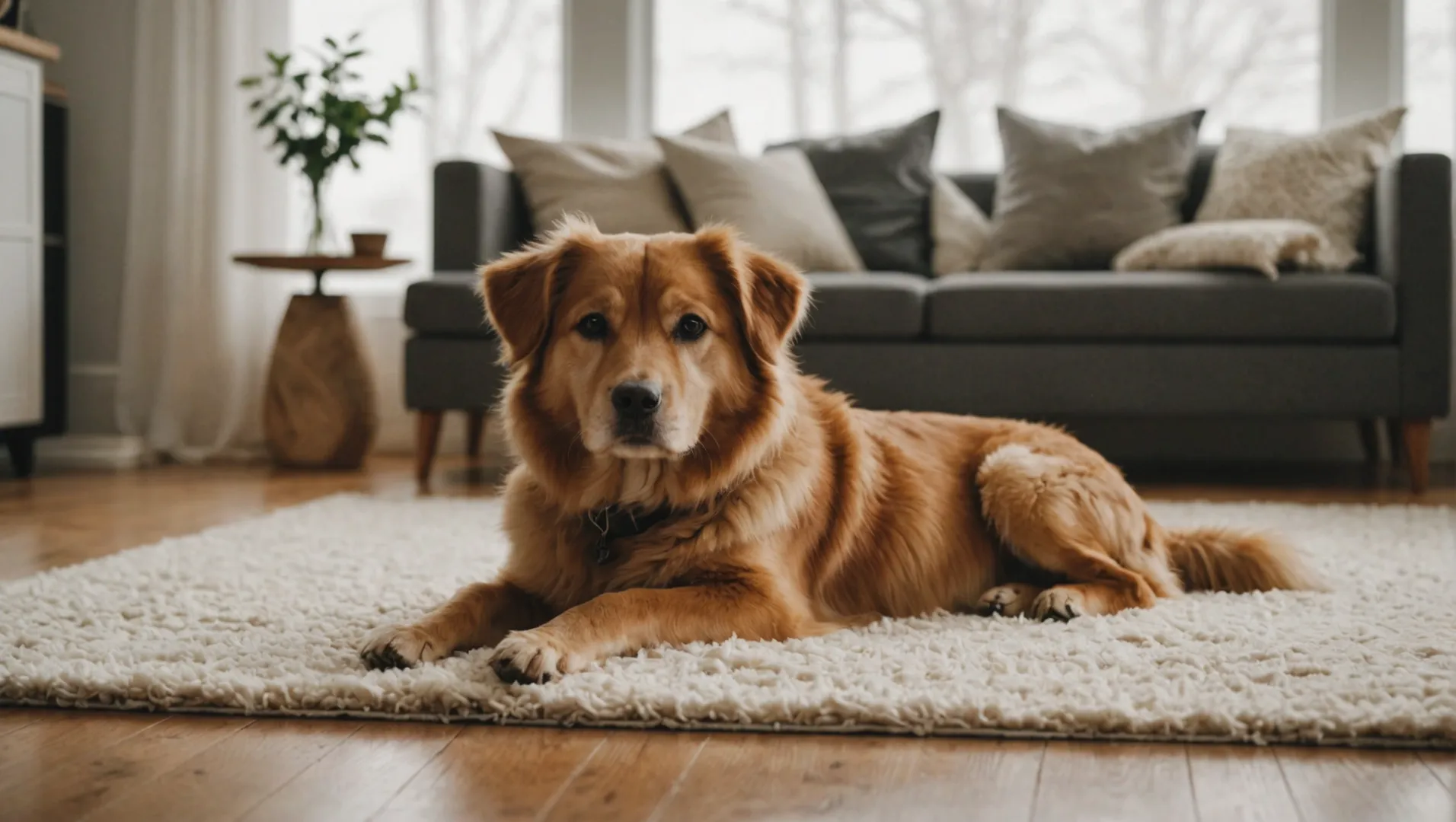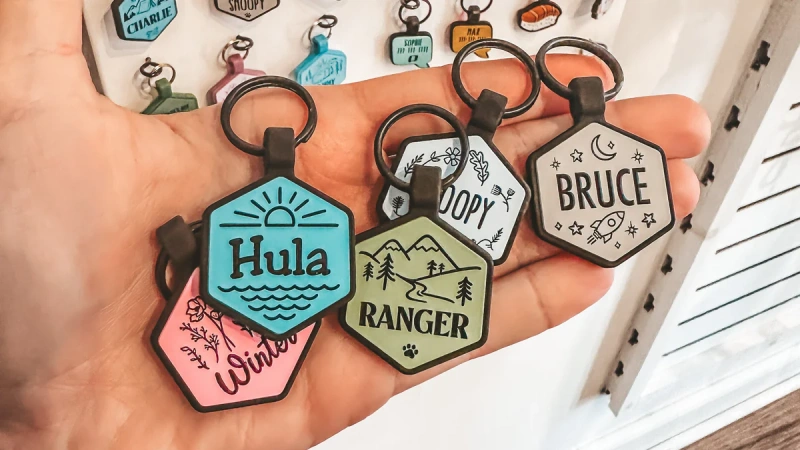
As a devoted dog owner, I’ve often found myself pondering this question: Is it safe to leave my dog’s harness on all day? It’s a decision that can significantly affect their comfort and overall health.
It’s generally not recommended to leave a harness on your dog all day. Prolonged wear can lead to discomfort, skin irritation, or anxiety, especially if the harness isn’t properly fitted. Regular checks and breaks are essential for your dog’s well-being.
Understanding the balance between control and comfort is crucial. Let’s dive deeper into choosing the right harness and best practices for your dog’s happiness.
Leaving a harness on all day can cause skin irritation.True
Prolonged wear without breaks may lead to skin chafing and irritation.
What Are the Benefits of Using a Dog Harness?
Harnesses offer dog owners improved control and safety, making walks and travels more enjoyable for both dogs and their humans.
A dog harness distributes pressure evenly across your dog’s body, reducing strain on the neck and improving control. This is especially beneficial for dogs that pull during walks or have respiratory issues. Additionally, harnesses can prevent escape, enhancing safety during outdoor activities.

Enhanced Control and Safety
Harnesses provide better control over your dog compared to traditional collars. For dogs that pull, a harness distributes the pulling force across the chest and shoulders instead of the neck, reducing the risk of injury. This design is particularly advantageous for breeds with respiratory issues or short snouts, like pugs and bulldogs.
Understanding pressure distribution1 can help you see why harnesses are often recommended by veterinarians. Unlike collars, which can put pressure on the trachea and neck, harnesses allow for even force distribution, minimizing the risk of choking or throat damage.
Prevention of Escapes
For owners concerned about their dog slipping out of a collar, harnesses offer an added layer of security. Some harness designs include multiple points of adjustment, making it harder for dogs to wiggle out during a walk or in a crowded area. This feature is especially useful for skittish dogs or those prone to running away.
Ideal for Training
Harnesses are excellent tools for training purposes. They provide better leverage when teaching your dog to heel or walk calmly by your side. Some models even come with front-clip attachments that deter pulling by redirecting your dog’s focus back to you.
Safety in Vehicle Travel
When traveling by car, harnesses designed specifically for vehicle use can secure your pet safely in place. These harnesses often include seat belt attachments that prevent your dog from becoming a projectile in the event of an accident.
Exploring car safety options2 for pets can reassure you about the choices available to protect your furry friend during trips.
Comfort and Support
Lastly, a well-fitted harness offers support without restricting your dog’s natural movements. Many harnesses come with padding and breathable materials, ensuring comfort during extended wear. Regularly checking for fit and adjusting as needed will help maintain your dog’s comfort and prevent chafing or irritation.
Harnesses reduce neck strain for dogs that pull.True
Harnesses distribute pulling force across the chest and shoulders.
Collars are safer than harnesses for dogs with respiratory issues.False
Harnesses reduce trachea pressure, benefiting dogs with respiratory problems.
How Can You Tell if Your Dog’s Harness Fits Properly?
Ensuring your dog’s harness fits properly is crucial for their comfort and safety. A well-fitted harness prevents discomfort and escape.
To check if your dog’s harness fits properly, ensure it is snug yet comfortable. You should be able to fit two fingers between the harness and your dog’s body without any slipping or pinching. Proper adjustment of the straps is key to ensuring a secure fit.

Why Proper Fit Matters
A correctly fitting harness is vital not only for your dog’s comfort but also for their safety. An ill-fitting harness can cause chafing, restrict movement, or even allow your dog to escape. Understanding the importance of a good fit will help you maintain your pet’s comfort and safety3.
Steps to Check Harness Fit
- The Two-Finger Rule: Once the harness is on, slide two fingers between the harness and your dog. This ensures the harness is snug but not too tight.
- Check for Movement: Gently pull on the harness. It should stay in place and not rotate around your dog’s body.
- Observe Your Dog’s Behavior: Your dog should be able to move freely without any signs of discomfort or restriction.
Common Signs of a Poor Fit
- Redness or Irritation: Look for any signs of redness or irritation on your dog’s skin, especially under the arms and chest.
- Reluctance to Walk: If your dog hesitates or refuses to walk, it might indicate discomfort due to a poorly fitting harness.
Types of Harnesses and Their Fit
Different types of harnesses require different fitting approaches:
- Vest-Style Harnesses: These should cover your dog’s chest and back snugly, with adjustable straps for the best fit.
- Step-In Harnesses: Ensure both legs comfortably fit into the designated holes, with the harness snugly wrapping around the chest.
| Harness Type | Fit Checkpoints |
|---|---|
| Vest-Style | Snug chest fit, adjustable straps |
| Step-In | Legs fit easily, secure chest wrap |
Adjusting the Harness
Harnesses come with adjustable straps for a reason. Make use of them:
- Regular Adjustments: Check and adjust the harness regularly, especially as your dog grows or gains/loses weight.
- Material Considerations: Opt for harnesses made from soft, breathable materials to minimize skin irritation.
Final Tips
- Trial and Error: Sometimes, finding the perfect fit requires trying a few different styles or brands.
- Professional Help: Don’t hesitate to ask for professional help from a pet store employee or veterinarian if you’re unsure about the fit.
Two fingers should fit under the harness.True
The two-finger rule ensures the harness is snug but not tight.
A harness should rotate freely around the dog's body.False
A proper fit means the harness stays in place without rotating.
What Signs Indicate Your Dog is Uncomfortable in a Harness?
Identifying discomfort in your dog’s harness is crucial for their well-being. Look out for these signs to ensure a stress-free experience.
Signs your dog is uncomfortable in a harness include frequent scratching, reluctance to walk, or visible skin irritation. Adjusting the fit or selecting a softer material can help alleviate these issues. Regular observation and adjustments ensure your dog’s comfort and happiness.

Observing Physical Behaviors
One of the most immediate indicators that your dog might be uncomfortable in their harness is their physical reaction. Look for behaviors such as:
- Frequent Scratching: If your dog persistently scratches at the harness area, it may be due to chafing or skin irritation.
- Reluctance to Walk: Dogs that suddenly become hesitant or refuse to walk while wearing the harness might be trying to communicate discomfort.
- Excessive Licking or Chewing: If your dog starts licking or chewing at the harness or the area it covers, this could signal irritation or pain.
Assessing Skin and Fur Condition
Regularly check your dog’s skin and fur condition beneath the harness.
- Redness or Sores: Visible redness, sores, or hair loss under the harness is a clear sign of discomfort. This could result from friction, pressure, or allergies to the harness material.
- Matted Fur: Mats can form if the harness rubs against the fur too much, indicating it’s either too tight or the wrong size.
Understanding Behavioral Changes
Apart from physical signs, subtle behavioral changes can also indicate discomfort:
- Increased Anxiety: Your dog might appear more anxious or stressed when the harness is put on, possibly whining or pacing.
- Avoidance Behavior: If your dog hides or resists having the harness put on, it might associate it with discomfort.
Evaluating the Fit and Material
The fit and material of the harness play a significant role in your dog’s comfort:
- Tightness: Ensure there is enough room to fit two fingers between the harness and your dog’s body. Too tight can cause restriction and chafing.
- Material Softness: Opt for softer materials that are less likely to irritate sensitive skin. Soft dog harness materials4 can be a game-changer for sensitive dogs.
By observing these signs and making necessary adjustments, you can significantly improve your dog’s comfort while wearing a harness. Remember, every dog is different; what works for one might not work for another, so always tailor your approach to suit your furry friend’s specific needs.
Frequent scratching indicates harness discomfort in dogs.True
Dogs often scratch at areas causing irritation or discomfort.
Matted fur means the harness is the right size for your dog.False
Matted fur suggests the harness is too tight or ill-fitting.
Are There Specific Situations When a Harness Should Be Removed?
Dog harnesses are useful, but there are times when removing them is beneficial. Learn when it’s necessary.
A dog harness should be removed in situations like bathing, resting, or showing discomfort. Removing it allows your dog to relax and prevents skin irritation from prolonged wear.

When Your Dog is Bathing or Swimming
One of the most obvious situations for removing a harness is during bathing5 or swimming. Water can lead to chafing and increase the chance of bacterial growth under the harness. Removing it ensures your dog remains comfortable and clean.
During Rest or Sleep
Allowing your dog to sleep without a harness can prevent unnecessary pressure on their body. Sleeping positions often involve rolling or stretching, which could cause discomfort if the harness gets caught or twisted.
If Your Dog Shows Signs of Discomfort
Observe your dog’s behavior when they’re wearing the harness. If they scratch excessively, lick certain areas, or seem agitated, these might be signs of irritation. In such cases, check for fit issues or remove the harness to alleviate discomfort.
After Extended Outdoor Activities
After a long walk or play session, your dog may benefit from having their harness removed. This allows their fur to breathe and reduces the risk of overheating, particularly in hot weather.
When Inside the Home
Inside the home, a harness might not be necessary unless there’s a specific need for control. Removing it can help avoid pressure sores and ensure your pet is at ease in their own space.
By understanding these scenarios, you can optimize your dog’s comfort6 and well-being, ensuring they enjoy both the safety benefits of a harness and the freedom from unnecessary wear.
Harness should be removed during dog baths.True
Water can cause chafing and bacterial growth under the harness.
Dogs should sleep with a harness on for safety.False
Sleeping without a harness prevents unnecessary body pressure.
Conclusion
In summary, prioritize a well-fitted harness for your dog while ensuring regular breaks for comfort. A happy dog makes for happier walks!
-
Learn how harnesses reduce strain on your dog’s neck.: The aim of this study was to evaluate the pressure distribution under three different types of harnesses used for guide dogs (designated H1, H2 and H3). ↩
-
Discover safe travel options for your canine companion.: If you’re looking for a walking harness and a safety-certified car restraint, the Sleepypod Clickit Sport is the perfect choice. The front … ↩
-
Learn why a proper fit is crucial for safety and comfort.: Selecting a well-fitting harness means your dog will be happier wearing it, less likely to Houdini out of it, and won’t suffer from related musculoskeletal … ↩
-
Learn about different materials that offer better comfort for dogs.: 1. Nylon – Nylon is a popular choice for dog harnesses due to its durability and affordability. It’s also lightweight and easy to clean. However … ↩
-
Find out why removing a harness during baths is important.: It’s a good practice to get your pup used to taking the harness on and off; I take my dog’s harness off the moment I’m home and I also wipe down … ↩
-
Learn strategies to balance harness use with comfort.: We put together this mini guide (it’s not intended to have all of the answers – but we’ll keep adding to it!) on how to get your dog to wear a harness. ↩



